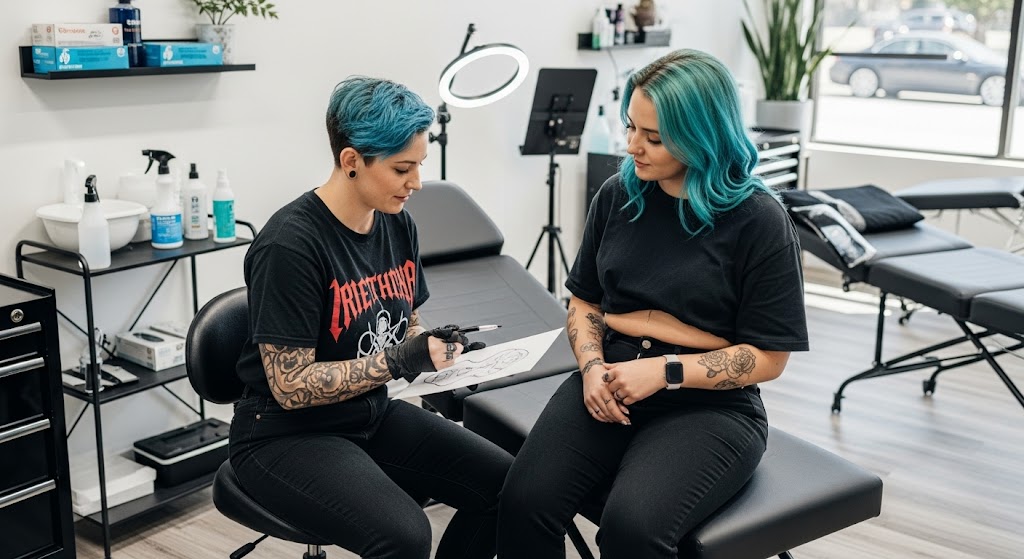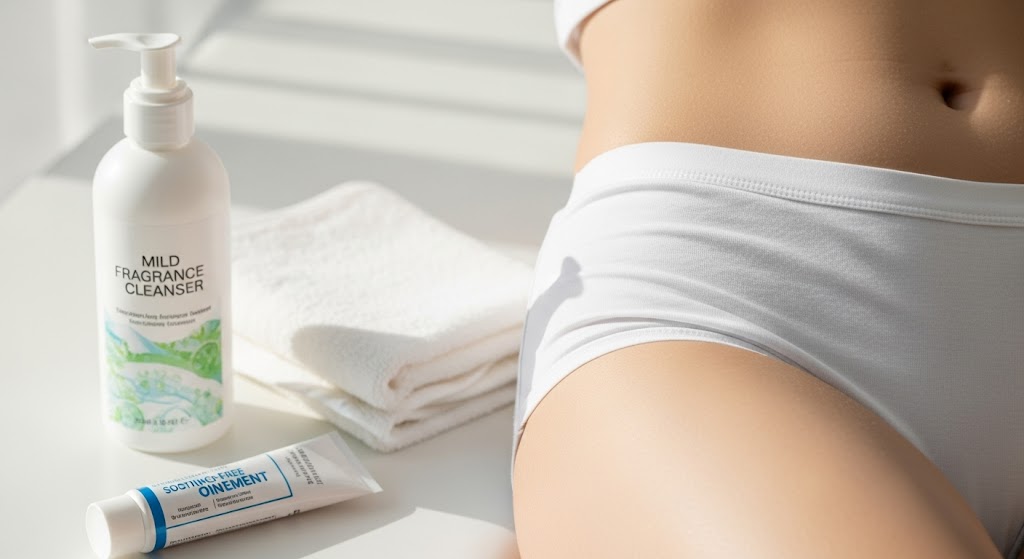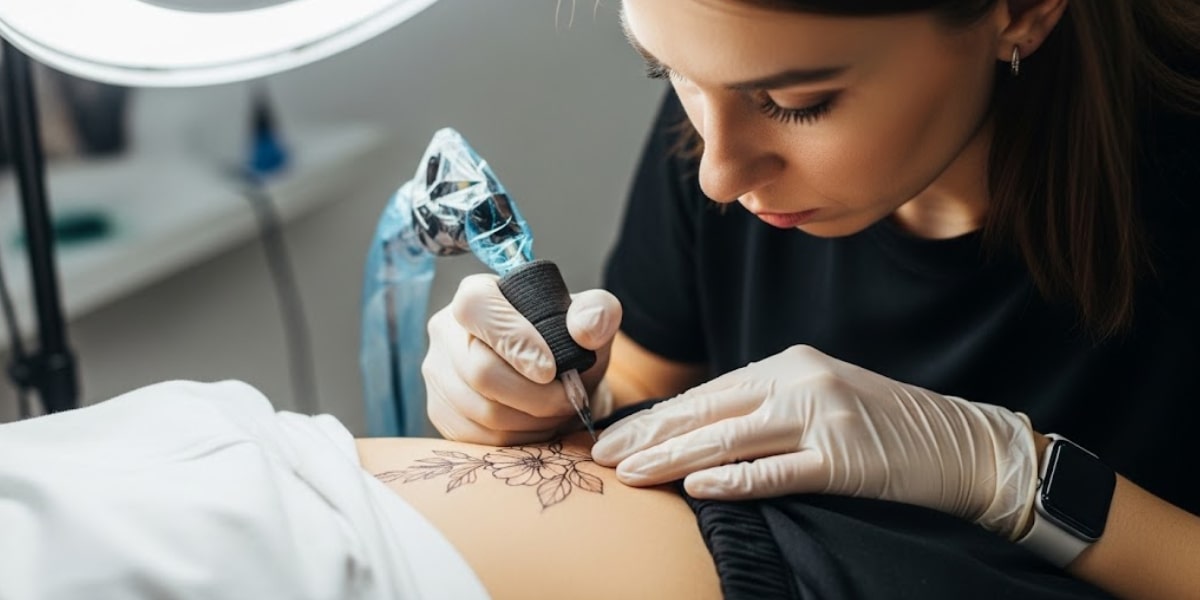Tattoos in intimateareas seem like a bold form of personal expression. Still, few people consider the potential long-term risks, including extreme sensitivity, prolonged healing times, and unexpected complications. These areas of the body are not just more delicate; they carry specific health, hygiene, and emotional factors that many clients and even some tattoo artists underestimate.
Knowing what to expect before getting inked in intimate areas can prevent painful mistakes, reduce scarring, and protect sensitive skin. From choosing the proper studio to understanding your anatomy’s unique reactions, being informed is critical before you commit.
This article explores everything you need to know about tattoos in intimateareas: common misconceptions, pain levels, aftercare mistakes, and key factors that impact long-term results, especially in the most private parts of the body.
Tattoos in Intimate Areas: What to Know Before You Go Under the Needle

Tattoos in intimate areas come with a unique set of challenges that go beyond typical body art decisions.
These regions involve heightened sensitivity, special hygiene requirements, and social stigmas that many clients are unaware of before their appointment.
This section unpacks the realities of choosing to tattoo such private areas, what pain and healing look like, and the risks that don’t get talked about enough.
Why People Choose Tattoos in Intimate Areas
Tattoos placed in intimateareas are often deeply personal. Whether it’s a symbolic design meant for a partner’s eyes only or a form of reclaiming one’s body, these tattoos carry emotional significance. They're also common among people in body-positive movements or those looking for a more private canvas.
- Privacy is a common motivator — many choose intimate placements for designs they don’t want visible daily.
- Sexual empowerment or commemorative purposes often influence placement decisions.
- Tattooing these areas can also be part of gender affirmation or personal healing after trauma.
Despite their private nature, these tattoos require the same (if not more) serious consideration as public ones.
How Pain Levels Differ in Intimate Areas
Pain is a significant concern when it comes to tattoos in intimateareas, and rightly so. These regions — including the inner thighs, groin, lower abdomen, and genital-adjacent skin — contain more nerve endings and thinner skin, increasing discomfort during tattooing.
- Clients frequently report sharp, burning pain during sessions in these areas.
- Pain tolerance varies significantly by location; the closer to the genital skin, the more intense the sensation.
- Numbing creams are occasionally used, but their effect is limited and must be applied by professionals.
Pain should never be underestimated, and discussing your tolerance openly with your tattoo artist is critical.
The Importance of Choosing the Right Artist and Studio

Not every tattoo artist is trained or willing to work on intimateareas, and that’s good. These tattoos require technical skill and discretion, making it essential to choose an artist with experience and professionalism.
- Look for studios with specific experience in tattooing private regions.
- Ensure the artist discusses positioning, consent, and comfort boundaries before the appointment.
- Due to the skin's vulnerability, cleanliness and sterilization protocols must be above industry standards.
Clients should never feel rushed, judged, or uncomfortable discussing sensitive placements.
Healing in Intimate Areas Takes Longer Than You Think
Healing is more complex when tattoos are located in intimateareas. These regions are often subjected to moisture, friction, and limited airflow, which can delay recovery and introduce complications.
- Avoid tight clothing for several days to prevent rubbing and irritation.
- Postpone sexual activity and workouts for at least one to two weeks, depending on your artist’s advice.
- Be vigilant about cleaning the area gently and using fragrance-free products only.
Swelling, minor bruising, and tenderness are normal in the first week. However, improper care can lead to scarring or ink distortion.
Aftercare Rules Specific to Tattoos in Intimate Areas

Proper aftercare is not optional regarding tattoos in intimateareas — it's mandatory. These regions are more prone to infection and require gentle handling during healing.
Follow these key aftercare steps:
- Clean the area twice daily with a mild, unscented cleanser.
- Use breathable cotton underwear and avoid synthetic fabrics.
- Do not apply ointments that a licensed artist or dermatologist hasn’t recommended.
- Pat dry — never rub — after cleaning.
Any signs of prolonged redness, foul odor, or pus may indicate an infection and should be evaluated promptly.
What to Expect During Intimate Tattoo Sessions
Knowing what happens during a session helps reduce anxiety. Tattoos in intimateareas are not treated like other placements — sessions often include unique prep and positioning, and modesty precautions vary by studio.
- Expect to shave the area in advance or have it done professionally at the studio.
- Your artist should offer privacy screens, coverings, and breaks as needed.
- Some positions may feel awkward, but are necessary for stretching the skin correctly.
Transparency and mutual respect are key throughout the entire process.
Potential Risks and Long-Term Concerns
While most tattoos in intimateareas heal well with the proper care, specific risks should be weighed before getting inked.
- Ink blowout can occur more easily due to soft, movable skin.
- Aging and weight fluctuations may distort tattoos in these areas more rapidly.
- There's a higher chance of regret due to social stigma or relationship changes over time.
These tattoos should never be impulsive. Reflection, research, and a trusted artist are essential for a result you’ll be happy with long-term.
Conclusion:
Getting tattoos in intimateareas is a serious decision that demands more than a quick yes. From intense pain and longer healing to emotional significance and privacy concerns, these tattoos are unlike any other. They require deep trust in your artist, a strict aftercare routine, and the understanding that physical and social complications are more common in these placements.
They can be empowering, beautiful, and deeply personal if done right. But skipping research or rushing the process can result in pain, regret, or permanent skin issues. Take your time. Ask questions. And be sure your decision is about you, not pressure, trends, or impulse.
FAQs
Yes, some pigments—especially reds and yellows—are more likely to cause allergic reactions. Because intimate areas have thinner, more sensitive skin, it's essential to confirm your artist uses hypoallergenic or high-quality inks to reduce the risk.
They can, but typically only during the healing phase. Once healed, most people report no long-term change in sensitivity. However, nerve endings in these areas vary by individual, and some may experience minor changes in sensation.
They can. Skin in intimate areas is subject to frequent movement, moisture, and pressure, all of which can accelerate fading or distortion. Weight changes, pregnancy, or aging may also impact how the tattoo looks over time.
It’s possible but riskier. The skin in these areas is more prone to scarring or pigmentation issues. If considering removal, consult a dermatologist or specialist with experience working with sensitive or intimate regions.
It depends on the condition. Those with eczema, psoriasis, or chronic dermatitis should consult with a dermatologist first. Tattooing on compromised or previously inflamed areas can worsen symptoms or trigger flare-ups.






